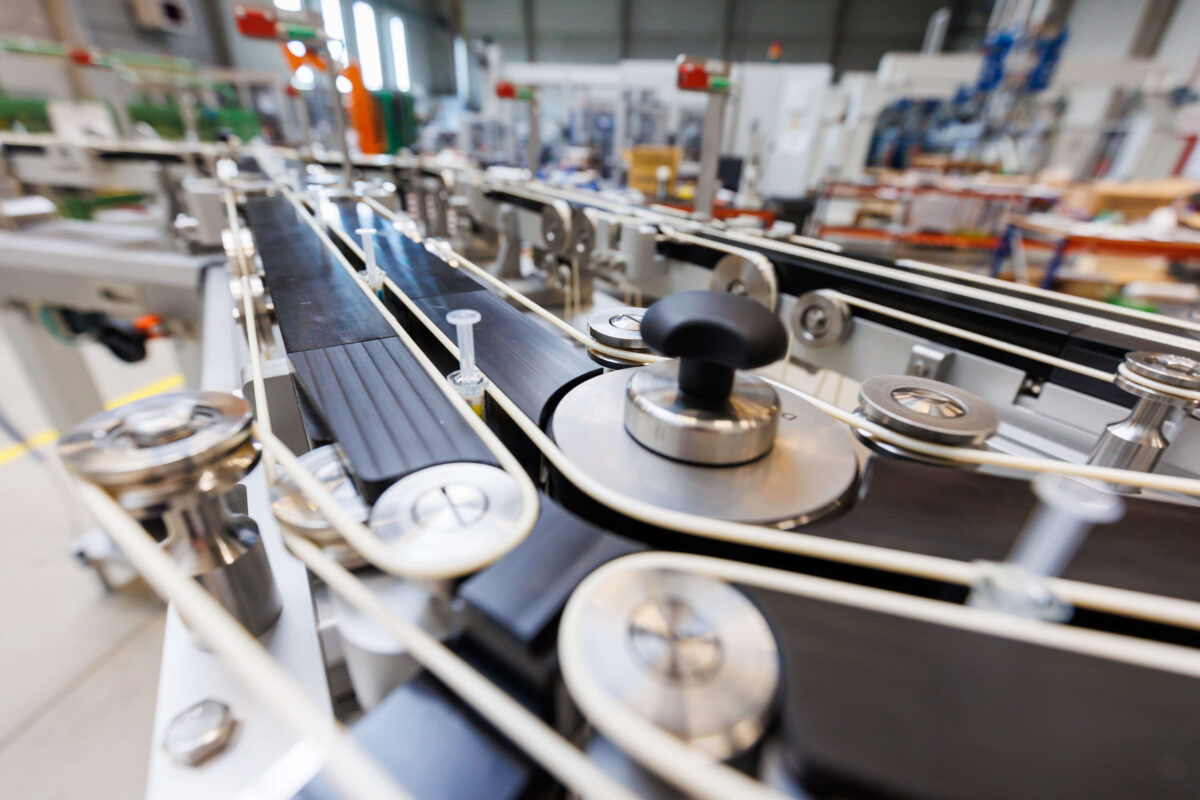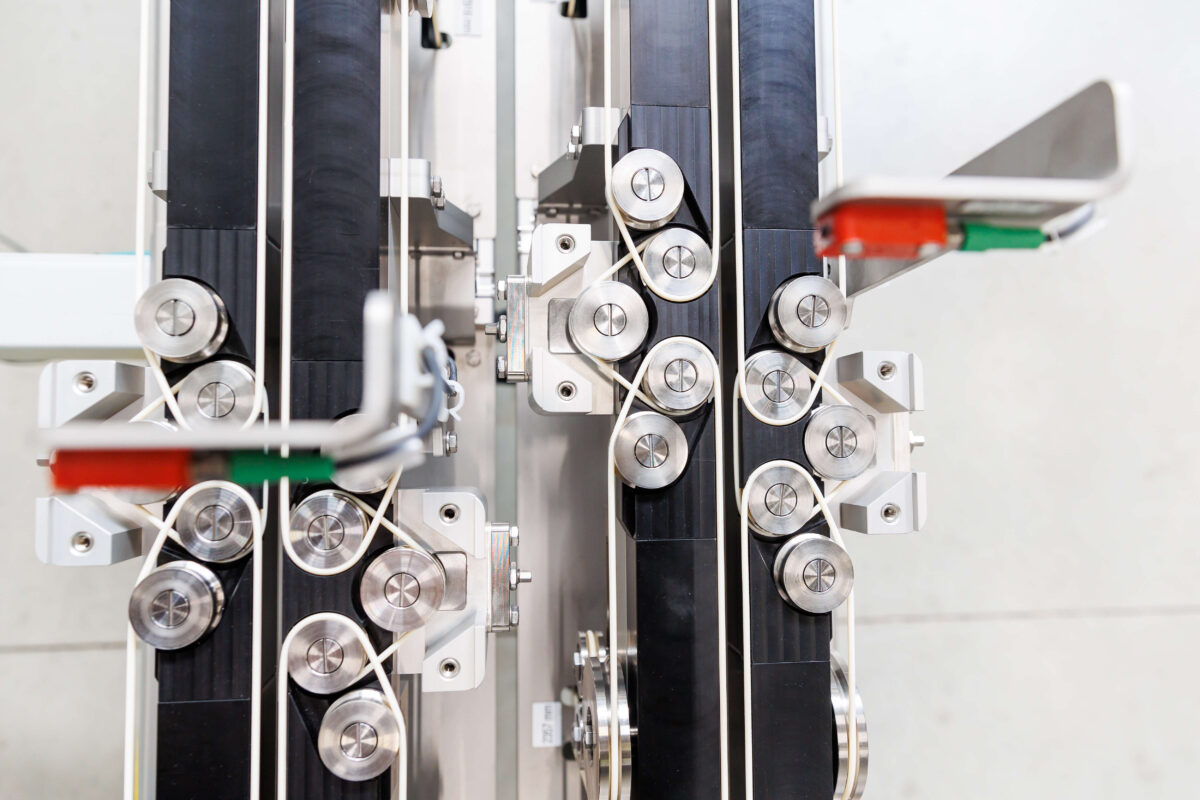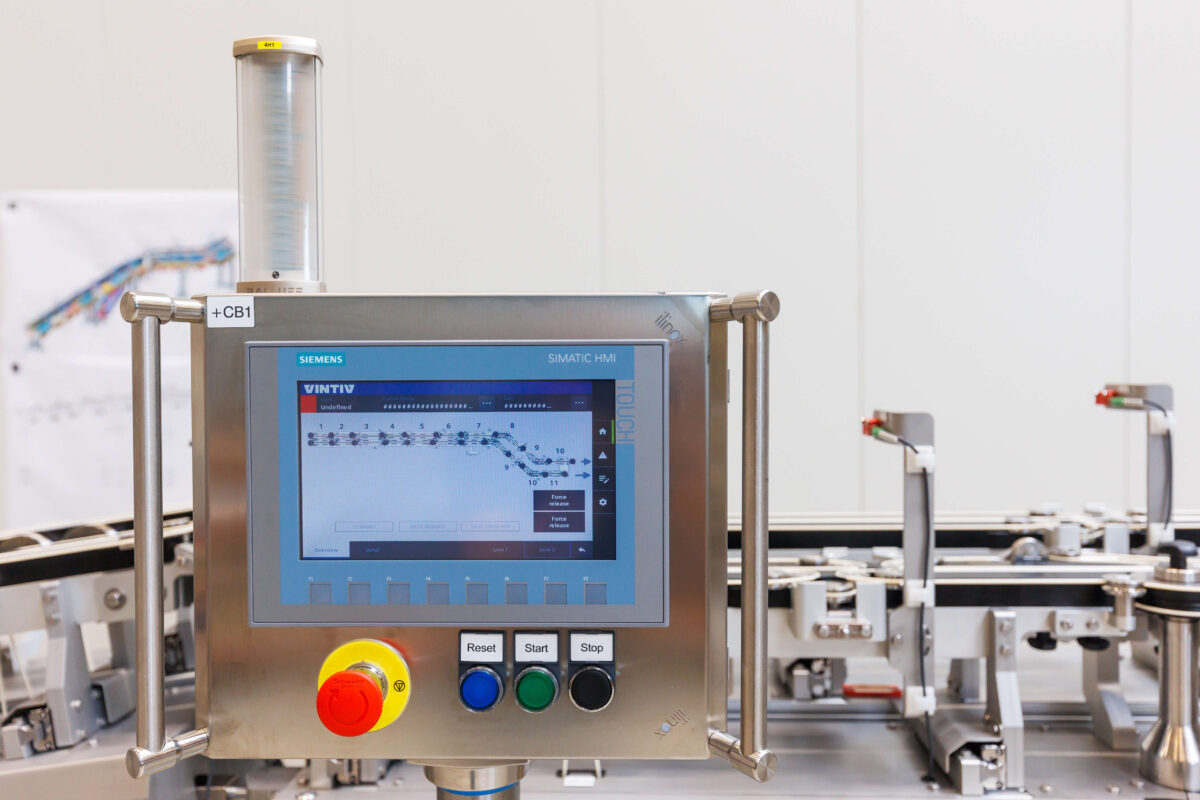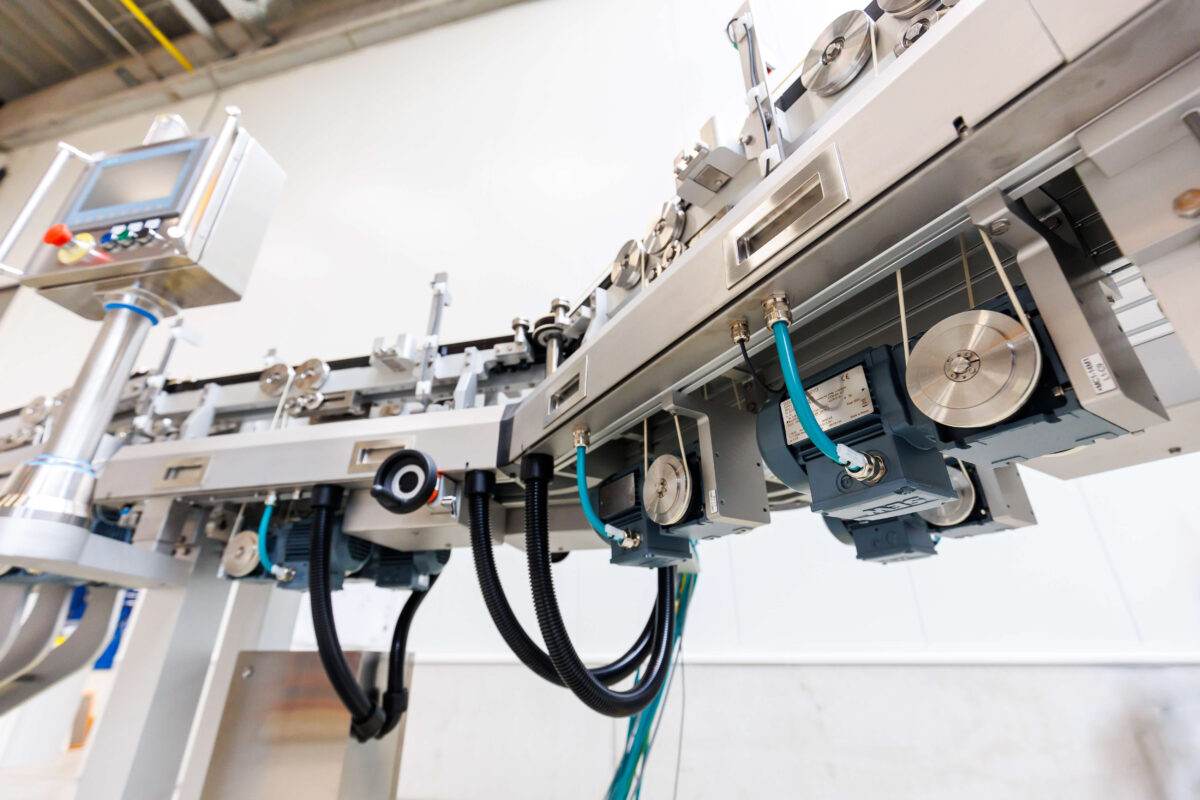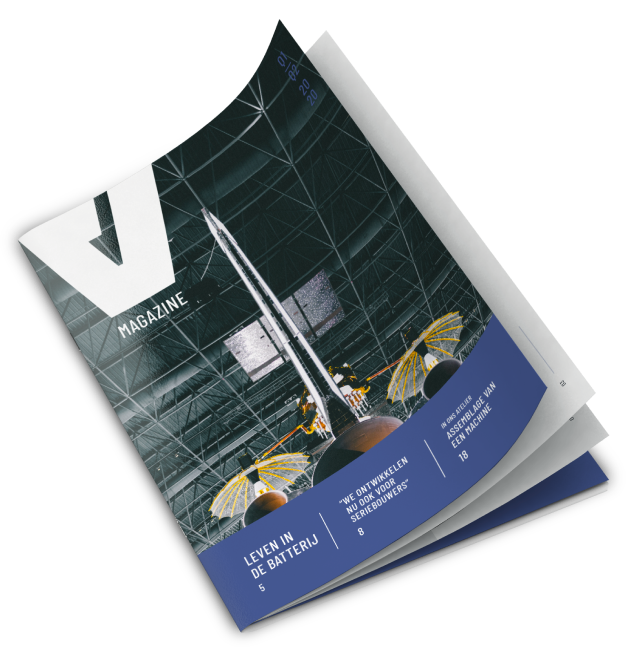Syringe transport system for different types of syringes
Challenge
This pharmaceutical company was facing several problems with their syringe transport system. Although it was custom made for them, the transport system had difficulty handling syringes with a small collar.
This caused frequent blockages, unplanned downtime, and issues with the three machines dependent on this transport system: the labeler, the needle infeed and the trayformer.
It also took operators too long to make changeovers.
More stable and flexible syringe transport system
Our job was to engineer and build a more stable and flexible syringe transport system, that also allowed for faster machine changeovers.
This system had to
- handle a specific type of syringes with a small collar
- cope with a wide product variety
- buffer syringes in multiple zones
- be accessible from all sides
- work very precise, without damaging the syringes
Solution
We had to reconcile two contradictions: precision and flexibility.
On the one hand, the machine had to be able to work accurately to a tenth of a millimeter.
On the other hand, the syringe transport system had to be adjustable per product. On top of that, we had to integrate different buffer sections and transition zones, and numerous precision mechanical parts like turning wheels, sliding strips, guiding bars… Making high precision handling a challenge.
We reconciled both with a well thought out mechanical design in combination with an extra robust structure, both taking into account tolerance build-up. We needed mass to rule out all variables and ensure accuracy.
Strings system
For the transport itself, we opted for a strings system that carries the syringes by their collar. This gives the machine the needed flexibility to deal with all the different syringe dimensions. In combination with the robust design, it also ensures that even the small-collared syringes are handled correctly. An additional advantage of strings, is that the side surface of the syringes remains untouched, preventing possible damage to the product.
The operator can manually change the width adjustment by means of rotary knobs.
Door section
We created a passageway so operators can easily and rapidly access all zones. After requesting access, they can swing certain parts of the machine open to temporarily create a passage, enabling them to move to the other side of the syringe transport system.
Driven corner wheels
The corner sections used to cause trouble. It was here that blockages frequently occurred. We solved this by engineering and integrating an angle drive by means of running wheels. These wheels help the syringes to round the corner correctly. This way, the system is not entirely dependent on gravity.
Line clearance
We paid a lot of attention to finishing. We kept open spaces to a minimum, and placed cover caps in several critical areas, so no syringes are left behind during machine changeovers. This makes for quicker visual checks by the operators.
Results
A syringe transport system that
- combines both flexibility and accuracy.
- can handle different product types.
- makes blockages a thing of the past.
- allows for faster changeovers.

